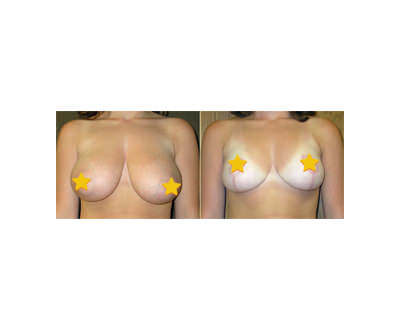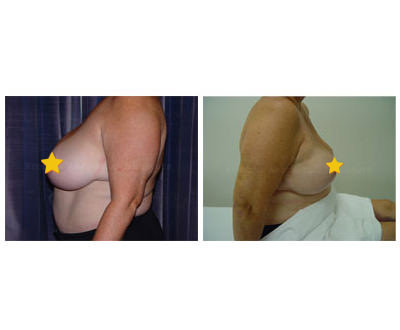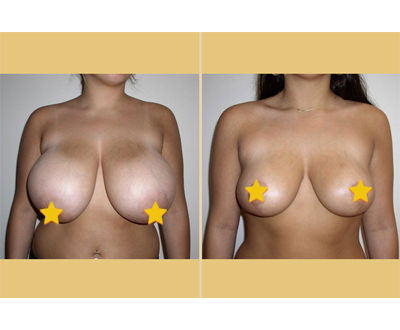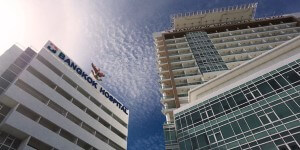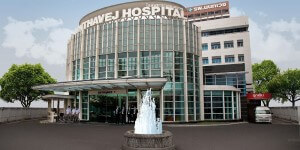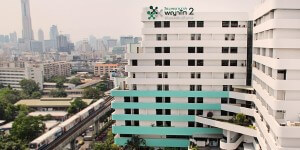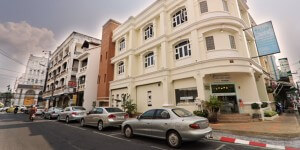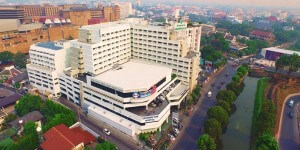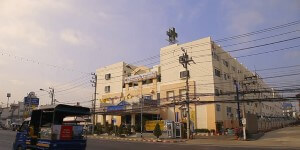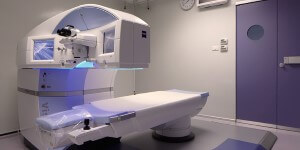Breast Reduction
Breast reduction surgery produces smaller and shapelier breasts in proportion to the rest of the body, giving many women a chance to live with lightness and confidence.
Do you ever hear women complaining that their breasts are too large? It doesn’t seem like it would be the most common problem, does it? But the truth is, many women suffer from breasts that are so large, they weigh them down and are a detriment to their daily lives.
Large and heavy breasts are not only a pain, but they can lead to many health problems like back and neck pain, skeletal deformities, breathing problems, and the list goes on. And in addition, unusually large breasts can make women feel extremely self-conscious.
So clearly, bigger is not always better when it comes to breasts!
Luckily, breast reduction surgery can help these women with very large breasts to live a healthy and happier life, confident in their skin and pain-free.
A breast reduction surgery removes breast fat, glandular tissue and skin in order to lighten the breasts and make them smaller and firmer.
The surgeon will make an incision around the nipple and under the breast’s surface, in the shape of an upside-down T. They will remove the excess tissue, fat and skin and then pull down the skin from above the nipples to shape the new breast.
Often, the surgeon will leave the nipples and areola attached to their original blood vessels and nerves, which will preserve sensitivity.
However, if the breasts are especially large, the surgeon may need to remove the nipple entirely and graft it to a new location, which will result in lowered sensitivity.
Before your breast reduction surgery, it’s very important to let your surgeon know of any medications you’re taking, whether prescription or non-prescription, as well as any allergies and medical conditions.
Stop smoking for 2 weeks before surgery, as this can affect how you react to the anesthetic. Smoking can also prolong your healing time after surgery.
You should also stop taking any aspirin or blood-thinning medication 2 weeks before surgery.
During your consultation with the doctor, be very clear about your expectation for the outcome of the surgery. You want to make sure you’re on the same page with the surgeon so they can create a body you will love.
You may need to send photos of your breasts to the surgeon for assessment purposes and to use as a reference after surgery.
After a breast-reduction surgery, you will wake up wrapped in elastic bandages, gauze dressings and a surgical bra. Be prepared to feel a little bit out of sorts after coming out of the anesthesia!
You’ve just undergone a major surgical procedure. There may be a small tube placed in each breast to allow blood and fluids to drain for the first few days following surgery.
Every person will experience swelling and bruising differently, so just be prepared to experience both for the first few weeks after your surgery. Cold compresses and ice packs can reduce pain and swelling during this time.
A few days after surgery, the doctors will take off the pressure bandages but you must leave the surgical bra on at all times for the next few weeks, until swelling and bruising subsides.
Follow directions from your doctor for how long to keep your surgical bra in place. You may remove it to wash but keep it in place as much as possible during this time.
Depending what type of sutures your surgeon used, you may need to go in and have them removed after about a week. If your surgeon used dissolvable sutures, they will dissolve on their own.
You may want to use a moisturizing lotion or Vitamin E oil on the breasts since they may be very dry after surgery.
Avoid all types of physical activity for a few months after surgery, especially any activities involving lifting or stretching your arms above your head. Overall recovery time after breast reduction surgery is about two weeks.
Breast reduction surgery is extremely safe, but there are still some risks associated with any surgical procedure.
The most common complication with this type of surgery is nerve damage to the nipple, especially if it has to be moved during the surgery.
Other risks include bruising, swelling, bleeding, infection, scarring and numbness. However, these symptoms should disappear within a few weeks after surgery. Numbness may linger for up to a year after surgery.
Available Hospitals
Click on hospital name to read more.
| Price (from) | Hospital / Clinic | City |
|---|---|---|
| 180,000 | APEX | Bangkok |
| 120,000 | Asia Cosmetic | Bangkok |
| 145,000 | Bangkok | Pattaya |
| 150,000 | Bangpakok9 POPULAR | Bangkok |
| 155,000 | F Clinic | Bangkok |
| 160,000 | Jungceylon | Phuket |
| 210,000 | Kamol POPULAR | Bangkok |
| 150,000 | Masterpiece | Bangkok |
| 100,000 | Naravee | Bangkok |
| 220,000 | Phuket (PPSI) POPULAR | Phuket |
| 170,000 | Phyathai 2 | Bangkok |
| 180,000 | San Paulo | Hua Hin |
| 150,000 | V Plast | Pattaya |
| 125,000 | Yanhee POPULAR | Bangkok |
Before & After
Nights in Hospital: 2-3
Duration of operation is about 4-6 hours and you need to stay in Thailand for atleast 12 days.
